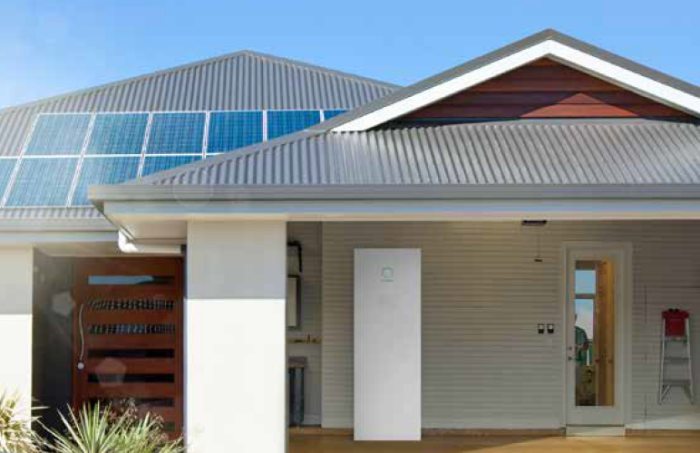
Image: via CEC
The Climate Council says Australia is on the cusp of a reliable renewable energy future and the Clean Energy Council has offered SA some advice on further boosting battery uptake.
Climate Council – Fully Charged
A new Climate Council report says Australia’s renewables and battery storage boom will keep the nation’s power grid “fully charged”. As well as large-scale storage, batteries installed in homes across Australia will also play a role as part of distributed systems.
Australia’s love affair with home battery storage is still really in its first blush, but how many systems are in place at this stage?
The Clean Energy Regulator has been keeping figures since 2014 on concurrent solar + battery installations; but as for retrofits, numbers have been a bit of a mystery.
The Climate Council report states 6,750 new home battery systems were installed in 2016, with that figure predicted to have tripled last year to more than 20,000 – but there doesn’t appear to be a reasonably solid final tally for 2017 as yet. In September, One Step Off The Grid reported more than 7,000 were installed across the nation in the first six months of 2017, with the 20k figure expected to be achieved for the year.
Recent data from the Clean Energy Regulator indicates there were 3,147 battery systems installed concurrently with solar last year1 (6,559 since 2014). Based on the Climate Council report number, that would mean approximately 16,850 retrofits to existing solar power systems may have occurred in 2017, assuming minimal installations associated with other applications.
The Climate Council notes the cost of lithium-ion batteries has plummeted 80% since 2010 and costs are expected to halve again by 2025.
“74% of people polled from across Australia2 expect household batteries to be commonplace in homes in the next decade,” states the report, which can be downloaded here (PDF).
While upbeat about small and large scale storage in its various forms such as batteries, pumped hydro and thermal, the report says Australia could reach 30% – 50% renewables by 2030 without significant new energy storage required.
States and territories have been leading by example on renewables and storage, but Climate Councillor and former BP President Greg Bourne said the Federal Government was still “missing in action” over credible and coherent energy and climate policy at a national level.
Clean Energy Council Battery Advice For SA
There’s been no shortage of energy and storage related announcements in South Australia recently in the lead-up to state elections next month, including an initiative that will see 50,000 homes fitted with solar + battery systems to form a virtual power station.
“The South Australian election is particularly important from a renewable energy perspective given the high profile of energy policy in the state and the strong leadership of the current government,” says Clean Energy Council Chief Executive Kane Thornton.
The CEC commends South Australia’s government for its efforts to date and has offered a number of recommendations that it believes will enhance the uptake of battery storage in SA.
Among them:
- Make zero interest credit lines available to approved battery suppliers so the Tesla solar+ battery initiative can be replicated on a mass scale.
- Extend battery schemes to include small and medium-sized businesses in rural and regional South Australia.
- Funding and supply of battery systems for schools, hospitals and critical public infrastructure.
- The removal of restrictions on battery system capacity3 allowed in homes and businesses.
The full list can be viewed here (PDF).
“These recommendations provide a pathway for future governments and the storage industry to make batteries a key part of South Australia’s energy future,” said Mr. Thornton.
Footnotes
- Currently the Regulator puts the total number of small scale solar installs for 2017 at 153,331, so concurrent solar + battery installations comprised a whisker over 2%. ↩
- Climate Council commissioned ReachTEL poll – September 2017. ↩
- The CEC may mean SA Power Networks inverter limits, which impact on battery size. ↩

 RSS - Posts
RSS - Posts



”
The CEC commends South Australia’s government for its efforts to date and has offered a number of recommendations that it believes will enhance the uptake of battery storage in SA.
Among them:
Make zero interest credit lines available to approved battery suppliers so the Tesla solar+ battery initiative can be replicated on a mass scale.
Extend battery schemes to include small and medium-sized businesses in rural and regional South Australia.
Funding and supply of battery systems for schools, hospitals and critical public infrastructure.
The removal of restrictions on battery system capacity3 allowed in homes and businesses.
”
This would be good across Australia, not just limited to South Australia; it should be federally funded via the CEFC, and it could be a great boon for places like communities and proprties away from cities, so that reliance on massively long transmission lines, can be reduced, and, apart from the evironmental benefits, making places outside cities, more self-sufficient, and, providing them with (reasonably) stable and secure electricity supplies.
”
The CEC may mean SA Power Networks inverter limits, which impact on battery size.
”
Similarly with WA (and anywhere else that it applies), where AC coupled batteries (?) or, batteries with their own inverters, like the Tesla Powerwall 2 batteries, are apparently, still banned for siinge phase electricity grid connections.
I have six solar panels.
They have been placed to capture the sun but when it rains the water does not go into the gutter and unfortunately goes straight onto the windows below and into the room.
Hello Mary
It sounds like your solar panels have been placed too close to the bottom edge of the roof. You are definitely entitled to request the installer adjust the position of the panels to prevent this problem.